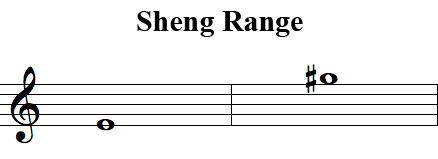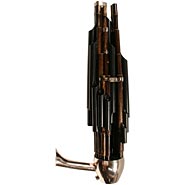Terms - S
S.d.
S.P.
Sachs, Curt
Sachs-Hornbostel
sackbut
Sackpfeife
sacred music
SAI
Saite
Saitenhalter
salphinx
salsa
saltando
saltarella
saltarello
saltato
Salve regina
samba
sambuca
Sanctus
sandpaper blocks
sanft
sans
sans instruments
sans sourdine
sansa
santur
sanza
sarabande
sarrusophone
sassofón
sassofóno
sassofono
sassofono baritono
sassofono basso
sassofono contralto
sassofono soprano
sassofono tenore
SATB
Satz
sausage bassoon
savart
sax
saxhorn
saxofón
saxofón alto
saxofón bajo
saxofón baritono
saxofón soprano
saxofón tenor
Saxophon
saxophone
saxophone alto
saxophone baryton
saxophone basse
saxophone soprano
saxophone ténor
saz
scacciapensieri
scala
scale
scaling
scandicus
scandicus flexus
Scandinavian school
scarso
scat singing
scena
Schallkasten
Schalmei
Schellenbaum
scherzando
scherzo
scherzo and trio
Schlagbass
Schlaginstrumente
Schlagrassel
Schlagzeug
Schlagzeugschlüssel
schleppend
Schluss
Schlüssel
Schlussteil
Schnabelflöte
Schnecke
schnell
Schneller
School Call
Schottische
Schwanz
Schwirrholz
schwungvoll
Scientific Pitch Notation
sciolto
scordatura
score
scoring
Scotch snap
scraped idiophone
scraper
scroll
Se
sec
secco
secco recitative
Sechzehntel
Sechzehntelnote
Sechzehntelpause
second
second ending
second inversion
seconda prattica
seconda volta
section
secular music
segno
segue
sehr
seizième de soupir
semibiscroma
semibreve
semibreve rest
semibrevis
semicorchea
semicroma
semifusa
semihemidemisemiquaver
semihemidemisemiquaver rest
semiminima
semiquaver
semiquaver rest
semitone
semplice
sempre
sensibile
sensibilita
sensibilite
sensibilmente
sensible
sentence
sentimento
senza
senza sordino
sepolcro
septet
sequence
sequencer
sequentia
serenade
sérénade
serenata
sereno
serialism
series
serioso
serpent
service
sesquialtera
sessantaquattresimo
set
seven stroke roll
seventeen stroke roll
seventh
seventh chord
severita
sext
sextet
sextolet
sextuple meter
sextuplet
sextus
sf
sff
sfff
sfffz
sffz
sfogato
sforzando
sforzando piano
sforzato
sfp
sfz
shaft
shag
shake
shaken idiophone
shanty
shape
shape notes
sharp
shawm
sheet music
sheng
shift
sho
shofar
short appoggiatura
short octave
shoulder
shuffle
Si
Si bémol
Si bemol
Si bemolle
Si dièse
Si diesis
Si doble bemol
Si doble sostenido
Si doppio bemolle
Si doppio diesis
Si double bémol
Si double dièse
Si sostenido
Sibelius
siciliana
Siciliano
sicilienne
Sick Call
side drum
sideman
sifflet d'oiseau
sigh
sight-reading
sight-singing
signature
signe de liaison du phrasé
signs
siku
silencio de blanca
silencio de corchea
silencio de cuadrada
silencio de fusa
silencio de garrapatea
silencio de negra
silencio de redonda
silencio de semicorchea
silencio de semifusa
sillet
sim.
similar motion
simile
simple interval
simple meter
simple time
simplex
sin' al fine
sinfonia
sinfonía
Sinfonie
sinfonietta
singende Säge
singer
singhiozzando
singing
single drag tap
single dragadiddle
single flammed mill
single paradiddle
single paradiddle-diddle
single ratamacue
single reed
single reed instrument
single stroke four
single stroke roll
single stroke rudiments
single stroke seven
Singspiel
sinistra
sinistro
siren
sirena
Sirene
sirène
sistro
sistrum
sitar
six stroke roll
six-four chord
sixteenth note
sixteenth rest
sixth
sixth chord
sixty-fourth note
sixty-fourth rest
sizzle cymbal
skip
Skordatur
slap
slap bass
slapstick
slargando
slash
sleigh bells
slentando
slide
slide trombone
slide trumpet
slide whistle
sliphorn
slur
small
small octave
smaniato
smear
smorz.
smorzando
snap pizz
snap pizzicato
snare
snare drum
soave
sob
Society for the Preservation and Encouragement of Barber Shop Quartet Singing in America, Inc.
Sociology of music
soft pedal
soggetto
Sol
Sol bémol
Sol bemol
Sol bemolle
Sol dièse
Sol diesis
Sol doble bemol
Sol doble sostenido
Sol doppio bemolle
Sol doppio diesis
Sol double bémol
Sol double dièse
Sol sostenido
Sol-fa
solfaing
solfège
solfeggio
soli
solmization
solo
son
sonare
sonata
sonata cycle
sonata da camera
sonata da chiesa
sonata form
sonata-allegro form
sonata-rondo
sonate
sonate d'église
sonate de chambre
sonatina
sonatine
song
song cycle
song flute
song whistle
sono
sop. sax
sopra
sopranino
soprano
soprano clef
soprano recorder
soprano sax
soprano saxophone
Sopransaxophon
Sopranschlüssel
sordamente
sordini
sordino
sordun
sospirando
sostenido
sostenuto
sostenuto pedal
sotto
sotto voce
soubrette
soul music
Sound Off
sound recording
soundboard
soundbox
soundhole
sounding as written
soundpost
soupir
sousaphone
space
spagnoletta
Spanish school
SPEBSQSA
species counterpoint
spianato
spiccato
Spielblättchen
spinet
spinto
spirited
spiritoso
spiritual
Spitze
splash cymbal
SPN
spondee
Sprechstimme
sprezzatura
springer
Spruch
square dance
square piano
squeeze box
squillante
stabile
Stabriem
staccatissimo
staccato
Stadtpfeifer
staff
staggered breathing
stamped idiophone
stamping idiophone
stance
stanchezza
Ständchen
stanghetta
stantanto
stanza
statement
stave
steam organ
steam piano
steel band
steel drums
steel guitar
Steg
Steinspiel
stem
stentando
step
sticheron
stick
stick shot
sticking
stile antico
stile concitato
stile moderno
stile molle
stile rappresentativo
stile temperato
Stimme
Stimmstock
Stimmung
Stimmungsmusik
stinger
Stockfagott
stop
stopping
strain
strambotto
strascinando
strathspey
strepitoso
stretto
Strich
strict counterpoint
strike
string
string band
string bass
string instruments
string music
string quartet
string quintet
string trio
string.
stringed instruments
stringendo
strisciando
stroke
stromentato
stromenti a percossa
stromenti d'ottoni
strophe
strophic form
struggling
strum
strumentini
strumento a fiato
Stück
Studien
study
Sturm und Drang
style
style brisé
style de chapelle
style galant
suavita
sub-bass clef
sub-contra
Subbassschlüssel
subdivision
subdominant
subdominant chord
subito
subject
submediant
subtonic
suite
suite de danses
suives
sul
sul G
sul ponticello
sul tasto
sull'
sulla
sulla corda La
sulla tastiera
sulle
superdominant
superius
supertonic
sur
sur la touche
sur le chevalet
sus
suspended cymbal
suspension
sustaining pedal
Swanee whistle
Sweet Adelines International
sweet potato
swell
swing
swing band
swiss army triplet
syllabic
sympathetic strings
symphonia
symphonic band
symphonic poem
symphonie
symphonie concertante
symphony
symphony orchestra
syncopation
synthesizer
syrinx
system
sheng
[Chinese]
HISTORY:
The sheng has a history of thousands of years and is manufacture and use was reported in ancient Chinese history. Already popular among the Chinese people in the Yin Dynasty (1401-1121 BCE), the sheng is still in common use today. The sheng is the instrument that inspired the invention of the concertina, accordion and harmonica, and uses the same technology of metal reeds that vibrate as air passes through them. The sheng is also known as a Chinese mouth organ or Chinese panpipe.
PHYSICAL DESCRIPTION:
The original version of sheng is made up of a group of bamboo tubes of different lengths that are tied together with a string. Later improvements added reeds to each tube. The early sheng had thirteen to seventeen bamboo tubes. In 1006 CE, the Bei Song Dynasty, 19-tubes sheng was used. In the Ming and Ching Dynasty, popular sheng were 17-tubes, 14-tubes, 13 tubes and 10-tubes. In modern China, further improvements were made, and the 21-tubes, 24-tubes, 26-tubes, 27-tubes, 32-tubes, 36 tubes, and 51-tubes sheng were produced. Such arrangements allow sheng to play complicated chords and music.
SOUND PROPERTIES:
By virtue of its construction, this is the only Chinese musical instrument capable of playing multiple pitches simultaneously.
Example
 Sheng Range
Sheng Range
 Photos courtesy of Lark In The Morning
Photos courtesy of Lark In The Morning
Share
Tweet
Last Updated: 2013-02-14 19:30:58

